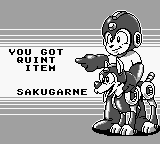Mega Man II
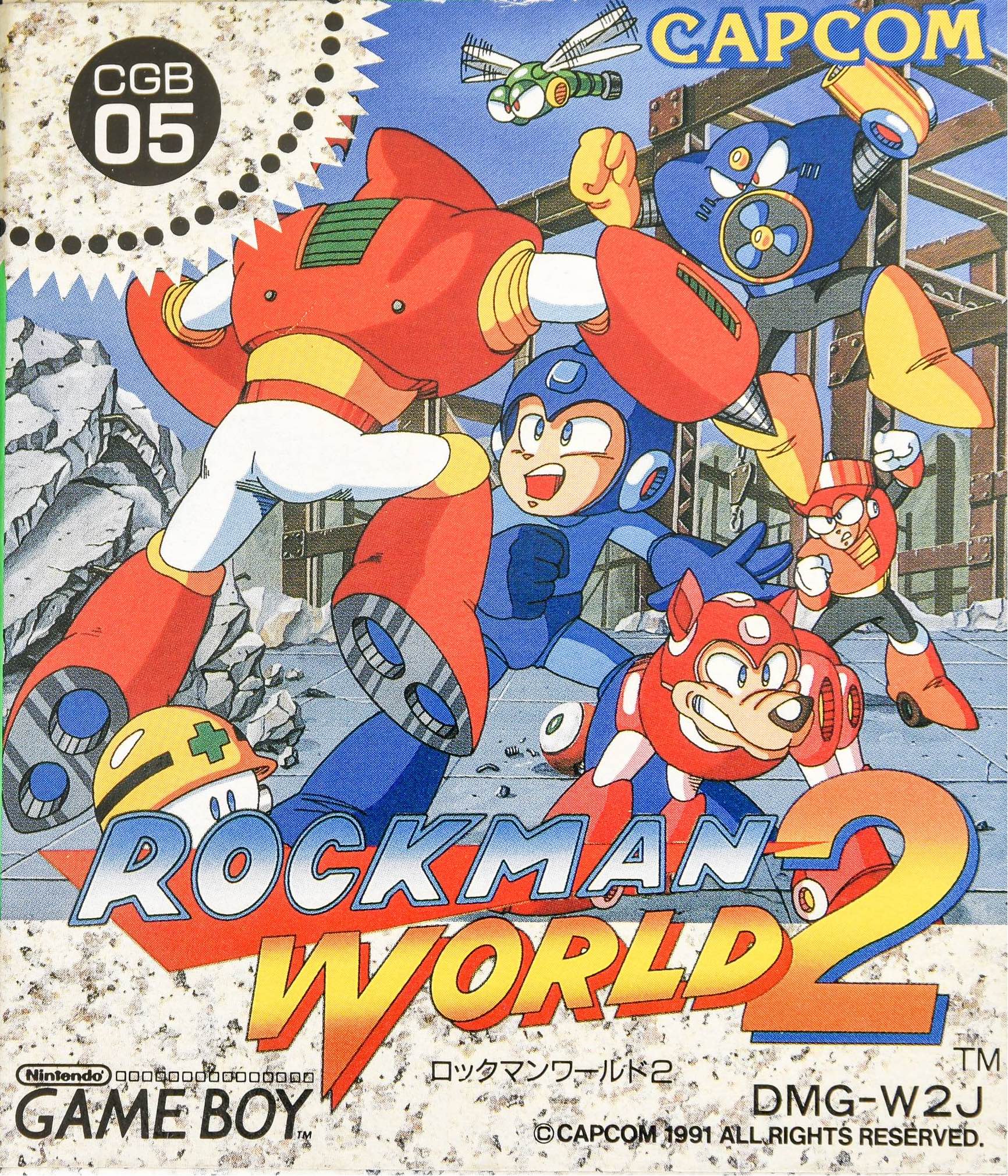
- Japanese release in December 1991
- North American release in February 1992
- European release in 1992
- Australian release in 1992
- Asian release in 1992
- North American release in 1998
- Player’s Choice
- Japanese release in March 2001
- Nintendo Power
- Developed by Biox
Another Failed Attempt?
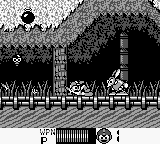
The NES Mega Man titles are not perfect; far from it. They’re great works of art though. Their controls are tight and responsive because of obvious perfectionism on the developer’s part, the level design is usually fun and inventive, the games are unfair but usually for the right reasons. Because of all this they’re a cultural standard that is used to judge sprite-based platformers to this day. They’re beloved, and they deserve it.
Comparisons between both families of games, NES and Game Boy, are inevitable. It’s absolutely fair; no one can look at an artistic project in a vacuum. And so the NES originals elevate the Game Boy games spun off from them by proxy. They make them better because when you play them, you’re obviously pushed into thinking of the NES games they are meant to echo. This game on my Game Boy is just like the one on my TV! While the first Game Boy game managed to carry out this task with limited success, managing to bring the concepts of Mega Man to a screen with fewer pixels in an ultimately unfair game, the second title does the opposite. It’s too easy and too dumb to really ever make you feel like you’re playing a real Mega Man game. That it was made by a small-time developer with very humble successes helps to explain this failure. Looking at what others have said about Mega Man II on Game Boy, people seem happy that you can finish this second title since it’s much easier than the first. I’d argue ease of play is not a very Mega Man thing to do; you want inventive ways to punish you to make you sharp and swift. Ultimately, just like with the stilted Mega Man: Dr. Wily’s Revenge, Mega Man II is essential because of its mistakes and problems. They’re just completely different.
Note on Naming Conventions
The NES and Game Boy Mega Man games share the same titles which makes it confusing to differentiate between titles. They do, however, have a neat little quirk to help differentiate them: the NES titles use Arabic numbers (2,3,4) while the Game Boy titles use Roman numerals (III, IV, V). So I’ll use those to differentiate them. Keep in mind that in Japan the Game Boy series was called Rockman World, which I might also write to be extra clear.
Biox?
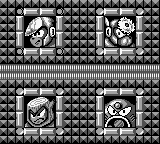
Let’s start with two facts: One, Mega Man: Dr. Wily’s Revenge was too hard for most people. Two, the next game, Mega Man II was released within the same year, was made by a different developer and is much easier. So what happened to cause this? Was Minakuchi sacked because they made a game that’s too hard? I implied as much in my article about the first game, but I’m not so sure anymore after thinking about it a bit more. I think Capcom wanted as many Mega Man games released on Game Boy as quickly as possible and they devised the way to do it: adapt and remix the previous NES games using multiple developers to do it. Having played Mega Man II now, I think Biox never came back to do another game because their attempt was just not up to the task of being a fun adaptation of Mega Man 2. So Minakuchi wasn’t sacked, Biox was.
Let’s start with the little details that Biox, the developer of Rockman World 2, got wrong.
First, when you hit a life pellet the game doesn’t pause and play the little jingle. The game continues while your life increases. It’s not much, to be sure, but it’s a small but essential part of the experience of playing a Mega Man title. Wily’s Revenge did not have that quirk, properly pausing the game while your life increased, which means that Biox either did it without realizing their mistake or thought getting rid of a staple of the games would be an improvement. It is such a staple of the Mega Man franchise to have you stop mid-air, while your life bar replenishes and you can relax for a split second, safe in the knowledge that you are getting the life bars you sorely needed for the challenges ahead.
Second, the doors to bosses don’t stop the screen from scrolling. When you walk towards them, the screen keeps moving and you can see the corridor beyond. It doesn’t happen with every Dr. Wily door, just some. It breaks the illusion and the expectations you are supposed to have regarding this upcoming boss battle.
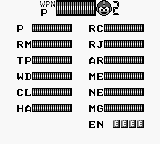
Third, the weapon select menu sucks. Mega Man weapon select menus have always kind of sucked; but here it sucks and they put the Rush Marine as the nearest selection. You use that maybe four times in the whole game, so you spend the whole game having to cursor past it for no good reason. GRRRR.
Fourth, the sound Mega Man makes when he touches the ground after jumping is high-pitched for no good reason. You just turn off the volume of your Game Boy after too long of this grating sound. The music also sounds like there’s always one note that’s off-key. Like the composer put in the wrong hex code every other note in each song just for kicks.
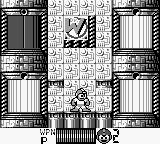
Fifth, Mega Man: Dr. Wily’s Revenge featured four bosses from Mega Man 2 in the boss rush before the final battle instead of having you repeat the same ones again. This was a welcome surprise, a hidden way to make the game meatier. Here for Rockman World 2, Biox used the same surprise again but went one step further and included a full remixed Mega Man 3 level before each extra Mega Man 3 boss you have to face. I guess it’s nice but it’s clunky; half of the game starts from the boss rush room. Luckily they give you a password after you finish each new boss but it’s a grating little oversight.
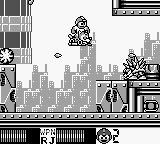
Sixth, Rush Jet works for too long. Rush Jet is the power-up that allows you to call your robot dog as a flying sled you then ride in the air, allowing you to basically bypass any challenge you deem too hard. NES Mega Man games knew they had to make Rush Jet useful but only for a short hop. Here it’s just too useful. It is so slowly sipping power that it’s totally overpowered turning any jumping section meaningless. You simply call Rush Jet and fly over everything that’s causing you any trouble.
To me, all those little details add up. The Mega Man games on NES are extremely conservative. The improvements and changes to the core formula are very calculated. The dash, Rush the robot dog, the charge shot and the rest are all additions to shake up the underlying formula which stayed the same for six games. That the developers at Biox broke the underlying formula shows their lack of understanding of what is ultimately the appeal of Mega Man. The people at Minakuchi excelled at getting the fundamentals right, even though their game was just as flawed.
Clocks?
Here’s another example of how the people at Biox missed the appeal of Mega Man. The Clash Man level on NES is very fun as an environment. You ascend a tower of tubes until you reach the top of the atmosphere to a dark sky devoid of stars. Then you reach the boss high up in space and fight him. Boom, that’s pure unadulterated Mega Man. The Game Boy Clash Man level has you ascend at first until you reach a background of mountains. Then you start going down and the walls of the level are suddenly a different tileset. The concept of the NES level is completely abandoned. I feel like different people designed different sections of levels and they connected them together haphazardly. They didn’t think of creating an experience they just went ahead and made levels, making sure it wasn’t too hard. They didn’t make sure it was challenging or cohesive or fun or anything, the modus operandi was not too hard. This game was made quickly, and it shows! You end up with a disjointed experience that feels more influenced by a short development time than by the Mega Man series on NES. Time seems to be the theme of the game here, and there’s this whole back story with time travel. To hammer the point home, the last level of the game features clocks in the background, more specifically the clocks from Dali’s Persistence of Memory. What?
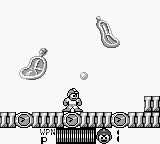
My Biggest Problem
The biggest battle of the game, the thing you should be most excited about is against a dude on a pogo stick! A pogo stick! A pogo stick! And it’s not just any dude. It’s an evil, future Mega Man that Doctor Wily has somehow transported back in time to fight present day stick-in-the-mud Mega Man. Evil future Mega Man on a pogo stick! A POGO STICK! How? How? How?
It is not a rhetorical question. I am dead serious. What confluence of madness, drugs, translation, laissez-faire and early 90s Japanese miracle bubble mentality led them down the path of future evil Mega Man on a pogo stick? The Mega Man series is not known for its serious attitude. You fight robot rabbits who throw robot carrots at you. Robot birds who throw eggs from which emerges a throng of mini robot chicks who lunge in your direction. I am talking here, to be clear, about robot baby birds guided missiles. How cool is that? There was, however, never anything so high-concept as evil future Mega Man on a pogo stick. The things you fight are cartoon robots based on animals, appliances, the general theme of the level’s boss. Mega Man: Dr. Wily’s Revenge introduced the concept of a Mega Man Killer. It’s a robot built to destroy Mega Man that you fight on your way to Dr. Wily: the Darth Vader to the Emperor. In tropes term, a dragon. So Biox ran with that idea and created a new dragon for their game. The best thing they could come up with was an idiot with sunglasses on his dumb stupid pogo stick. Which, of course, this being a Mega Man game, you then win as a weapon once you beat your future self. Mega Man steals his pogo stick from himself. It’s, of course, called Sakugarne and it is useless except against the last form of the last boss where it is secretly very strong. Of course. I mean, they had to have come up with the character design before inventing a dumb pogo-based history for him, right? There’s no explanation anywhere in the game that he’s come from the future with his pogo stick. . . OH MY GOD IS THE POGO STICK HIS TIME MACHINE?
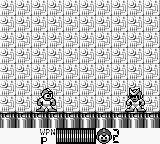
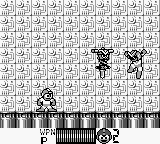
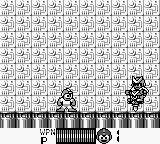
Conclusion
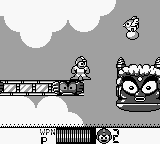
My main problem with Mega Man II is that it’s an OK Game Boy game but it is not particularly worthy of the Mega Man title. However, its flaws did not stop people from enjoying it; it was easier and still somewhat competent and it sold at least a million copies. Being after the most beloved NES title must have helped. It was quickly rereleased as a Players’ Choice title in 1993.
Mega Man on NES is a reliable series. You’re always doing something invigorating throughout every game. You can count on it. On Game Boy, the series was definitely not reliable. After experiencing the first and second Game Boy cartridges in depth, I’ve seen too many ups and downs. That those two titles were made by different developers helps explain it: Biox could obviously not build on the knowledge learned by the developers at Minakuchi Engineering to make a better sequel. With that in mind, I’m looking forward to the return of Minakuchi with Mega Man III. I’ve played Mega Man IV extensively and I love it so I can’t wait to play the third game; I have no idea whether it’s excellent like IV or kind-of-bad like II.
